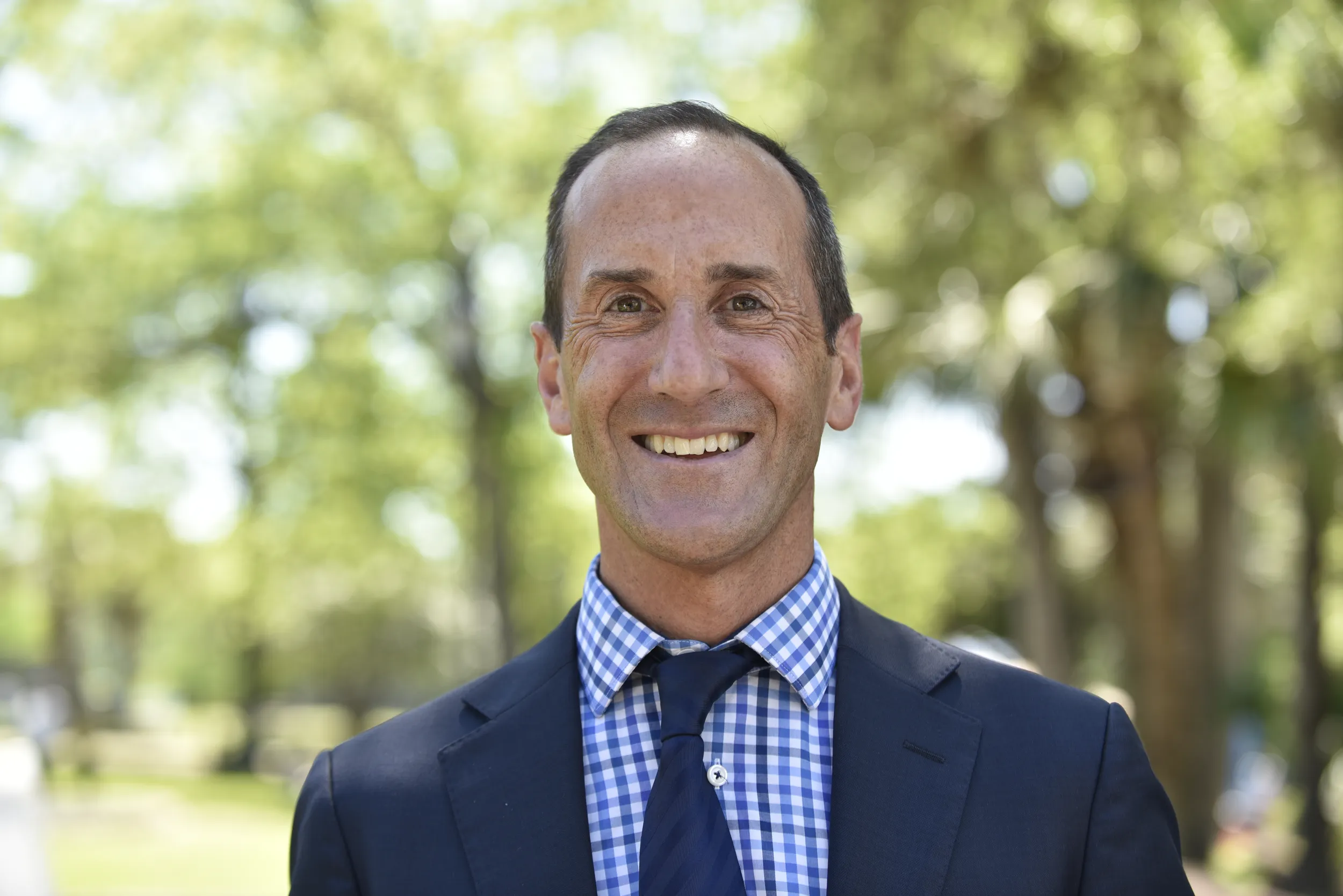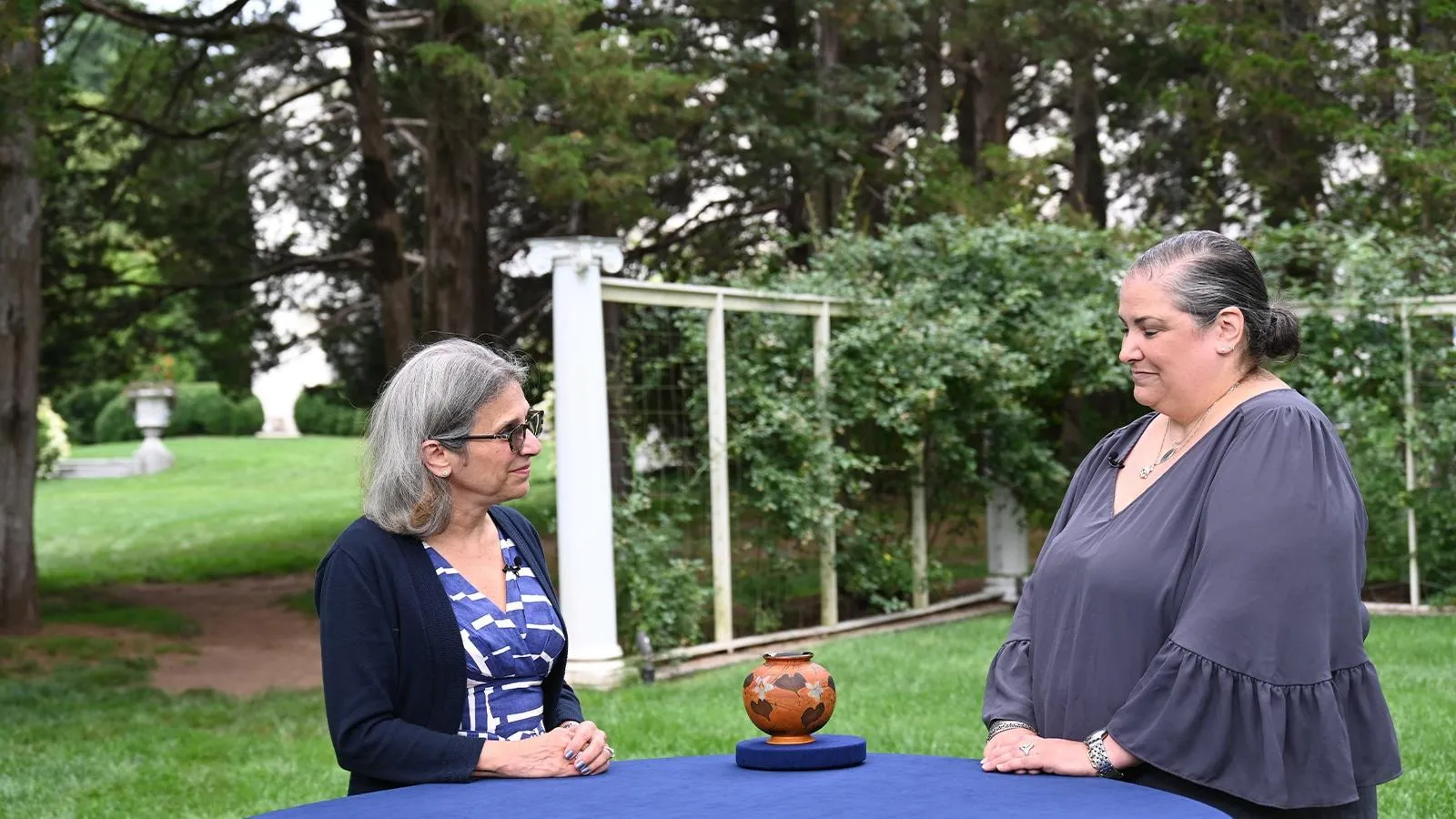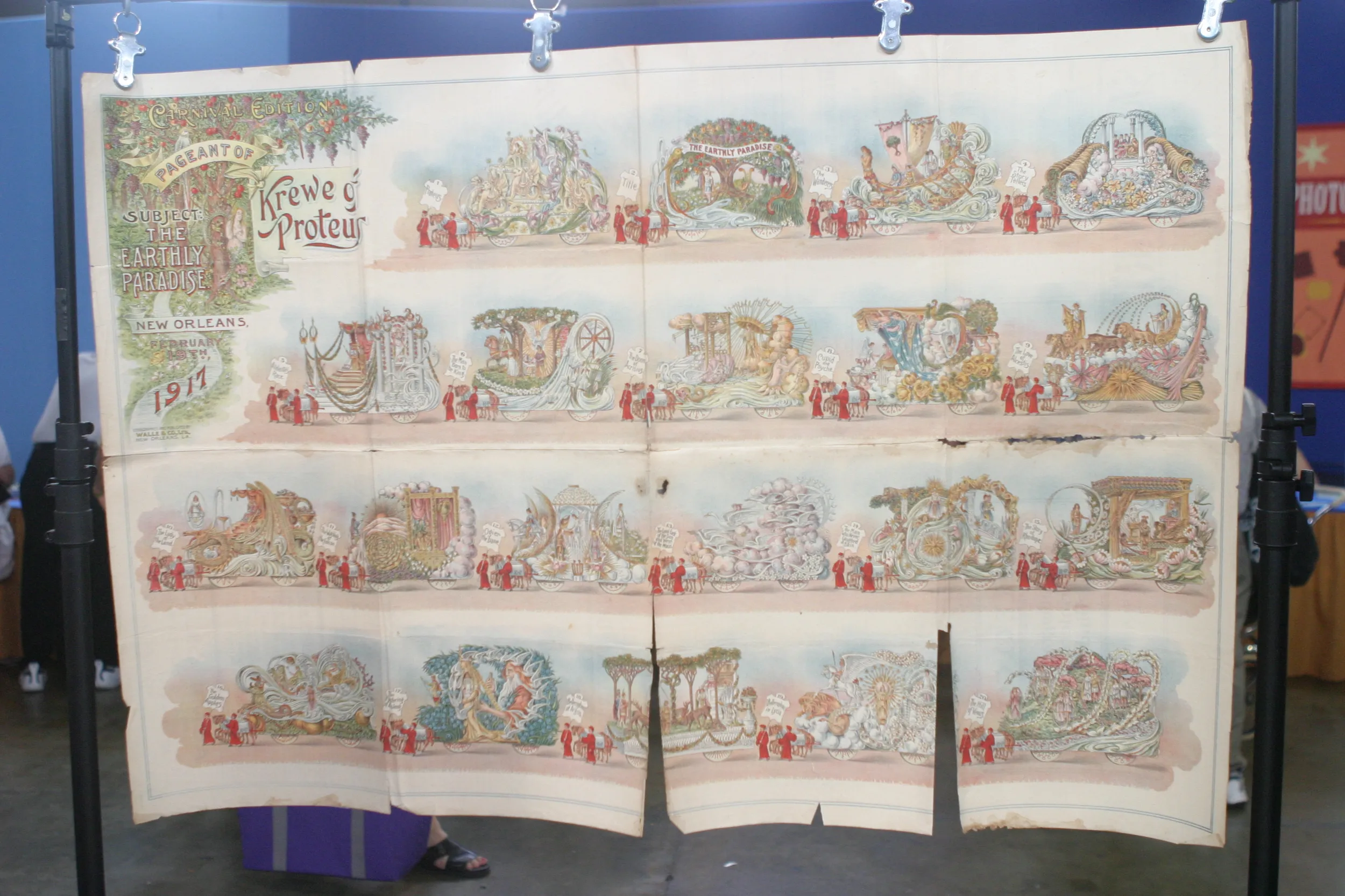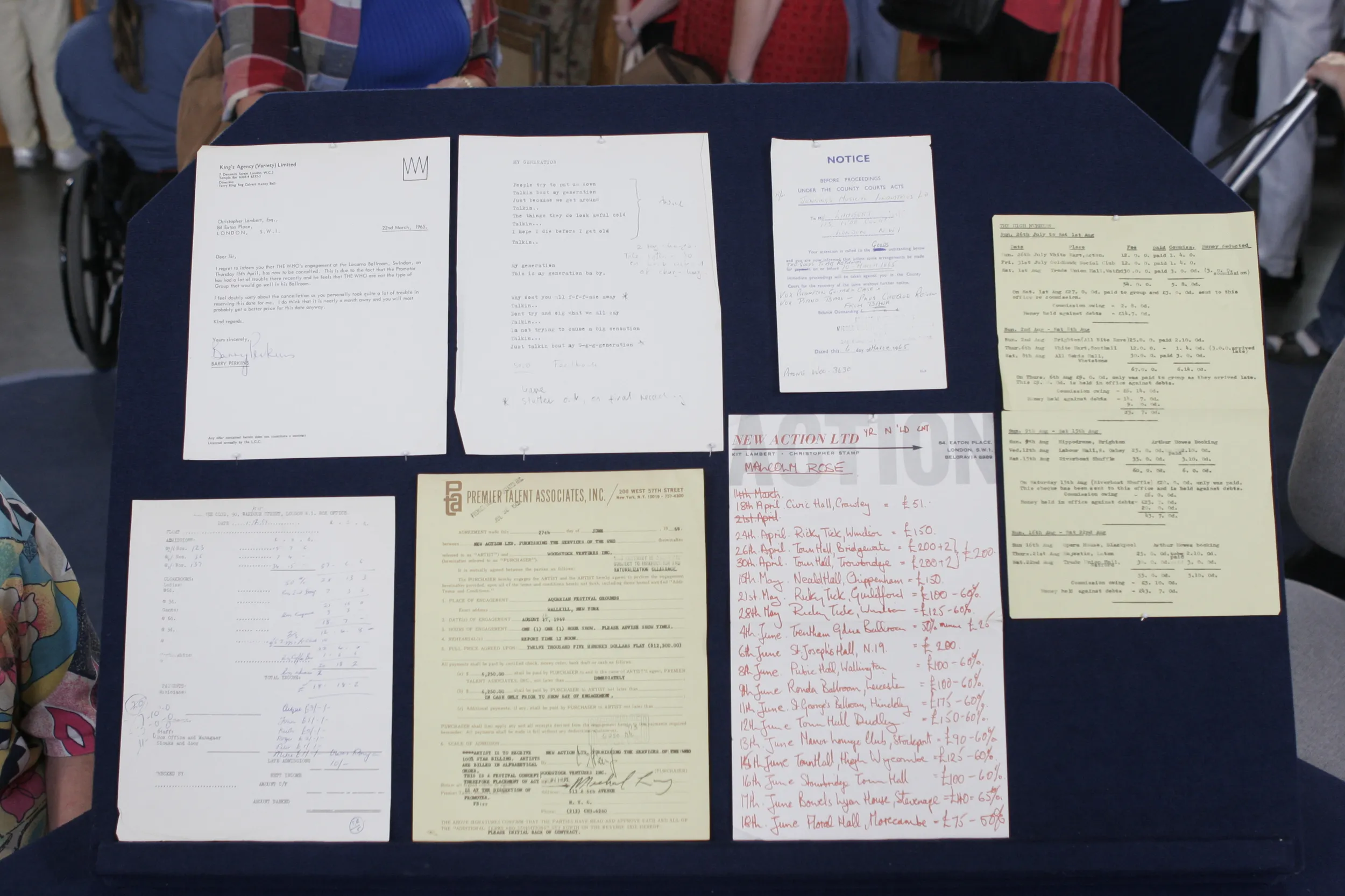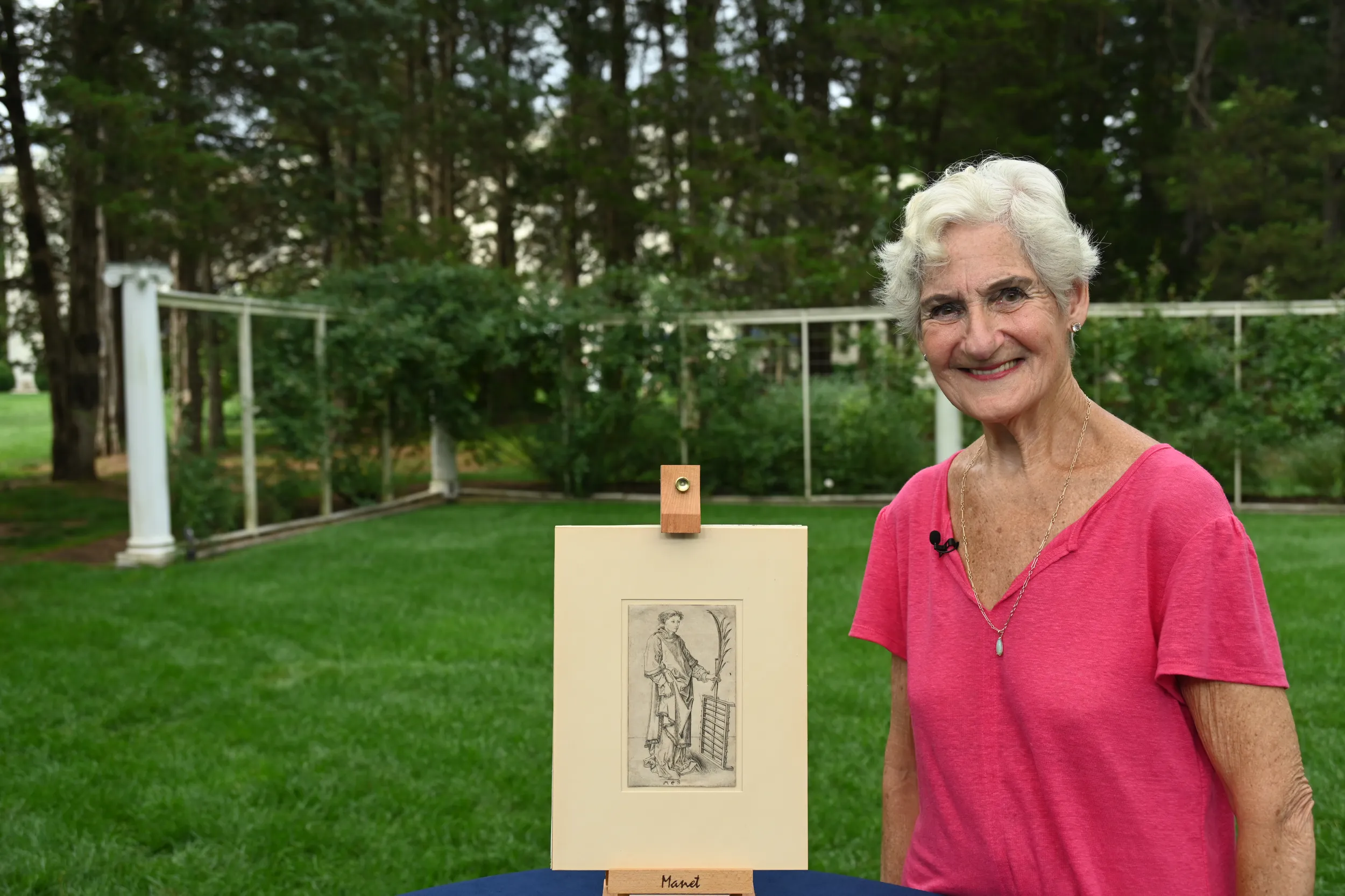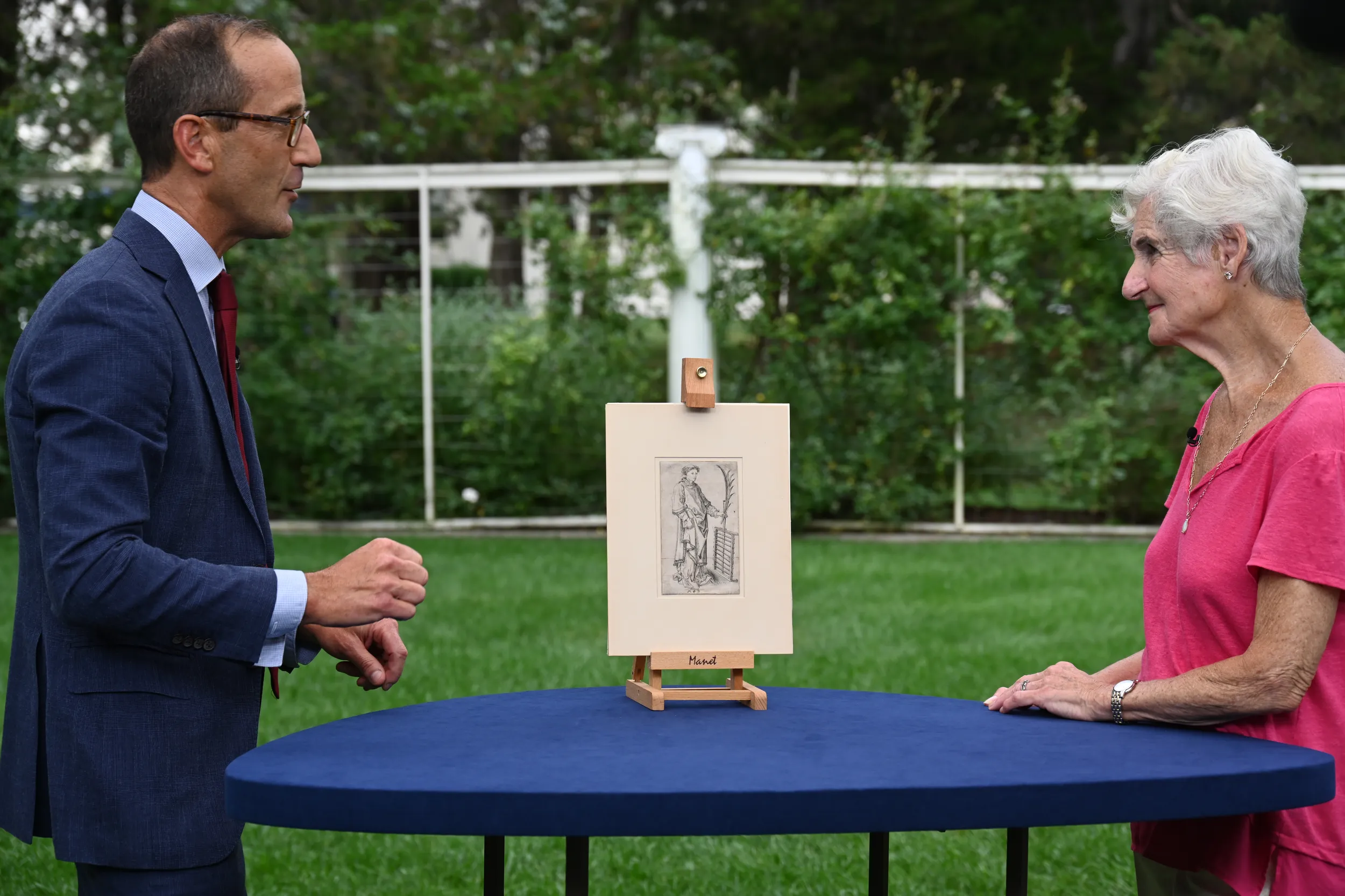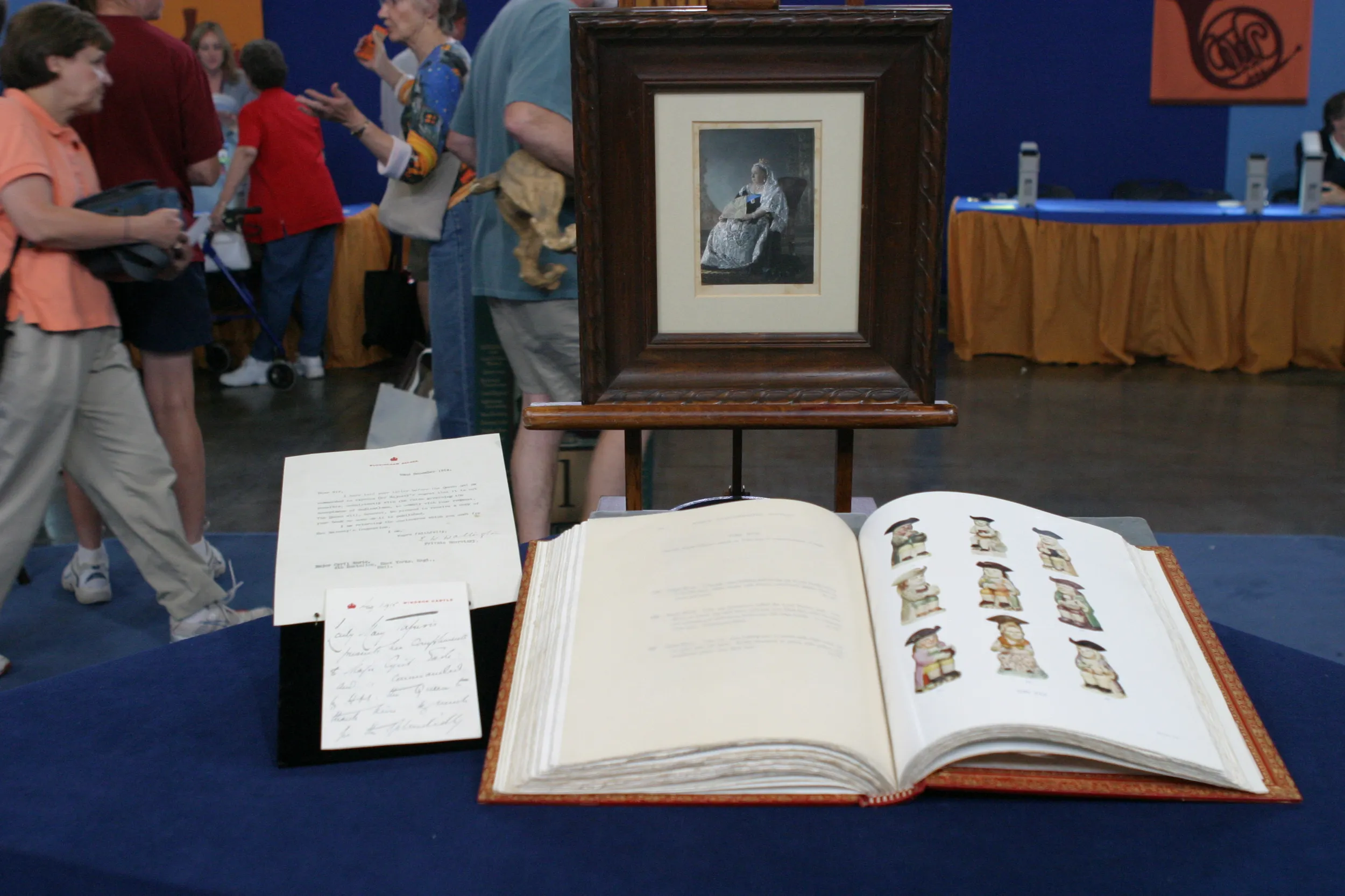GUEST: I got it from my parents. My mother got it from her mother, who passed away in 1944. Her father passed away in 1931. So I'm not sure exactly when it was purchased. I'm guessing sometime early '40s, possibly, from a gallery in New York City. I have appraisal prices on it from 1989, when my mother passed away, and also 1999, when my father passed away.
APPRAISER: Okay, so what was the most recent appraisal, in 1999?
GUEST: Um, $5,500.
APPRAISER: All right. It's by an engraver uh who would have identified as from the German territories in the 15th century...
GUEST: Mm-hmm.
APPRAISER: ...named Martin Schongauer. And you can see his initials
right there.
GUEST: Right.
APPRAISER: M.S.
GUEST: Mm-hmm.
APPRAISER: And Schongauer was the first uh most famous Western artist who did engravings. He's the first artist to come down to us with a more or less full biography. We know his name, we know where he worked, where he went to school. And it was on his work, his body of approximately 115 different engravings that he made over the course of a 30-year career that sort of Western printmaking was built. He's, he's that foundational of a figure. On that foundation every printmaker has built their careers, going from Albrecht Dürer, in the, in the 1500s...
GUEST: Mm-hmm, mm-hmm.
APPRAISER: ...to Rembrandt, to Goya in, in the late 1700s, right on up through Picasso and Andy Warhol. (laughing): This, this is the foundation of it, believe it or not.
GUEST: Oh, my goodness.
APPRAISER: He lived from around 1450 to 1490.
GUEST: Hm.
APPRAISER: And worked in a town named Colmar, which is now part of Alsatian France, near Southern Germany.
GUEST: Mm-hmm.
APPRAISER: Which was also a hotbed for publishing. We know that his father was a metalsmith, and he would've known engraving from his father.
GUEST: Mm-hmm.
APPRAISER: And we know that Schongauer trained as a painter. We know the subject here is St. Lawrence...
GUEST: Mm-hmm.
APPRAISER: ...who was a third-century Christian cleric that fell afoul of the Roman leadership and was martyred. And he's holding the palm frond of the martyr.
GUEST: Right.
APPRAISER: And we see this grill here.
GUEST: Mm-hmm.
APPRAISER: He was actually burned on the grill and that's how he was martyred. Even though Schongauer initialed all of his engravings...
GUEST: Mm-hmm.
APPRAISER: ...and didn't date a single one, we know through stylistic analysis with other engravings that Schongauer made that this is very likely towards the end of his career and made sometime in the 1480s, most likely. His earlier work is more busy, and the entire composition is filled with elements. In this composition, there's just a sparseness to this which is indicative of a later-career work by Schongauer. We know how famous he was in his lifetime because there are dozens and dozens of copies made of his engravings by his contemporaries, and these copies were being passed off as Schongauers.
GUEST: As his? I see. Hmm.
APPRAISER: (laughs) We also know, looking at yours-- I took it out of the frame to see this…
GUEST: Yes.
APPRAISER: and had a closer look at the paper-- that there is a watermark on the sheet, which helps us date the sheet.
GUEST: Ah-ha.
APPRAISER: Which places it as, as printed by Schongauer in his lifetime. I have not found another impression of this subject at auction in 40 years.
GUEST: (chuckles)
APPRAISER: This is in great condition. The sheet is so well-preserved from the 1480s. It's as good as you'd want to see. I would put a conservative auction value on this at between $40,000 and $60,000.
GUEST: (exhales) (laughing): I'm speechless. (sighs) A treasure.
APPRAISER: Yes.
GUEST: An absolute treasure for many, many, many reasons.
